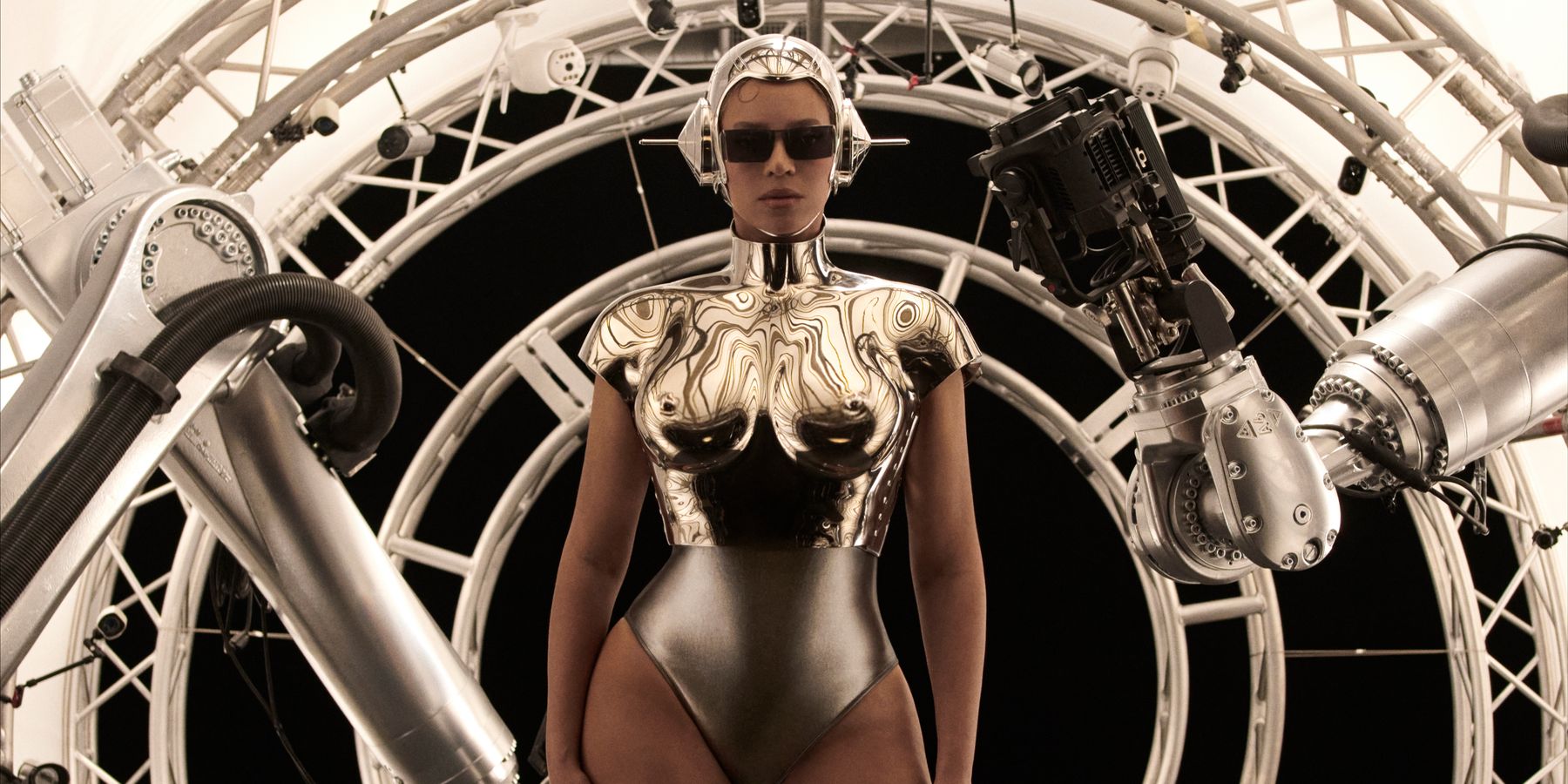
Beyoncé's RENAISSANCE and Our Black, Queer Rebirth
Story by George M. Johnson / Photography by Mason Poole / Styling by Shiona Turini / Hair by Nakia Rachon / Make-up by Rokael Lizama / Creative direction by Andrew Makadsi

If we’re lucky, we get to die several times in our lifetime. Not a physical death, but one where we shed the person we once were for us to become who we are in the present, changing the trajectory of our future. Realigning ourselves mentally and spiritually, tapping into our higher being. Going through periods of unlearning and removing the boxes society places us in.
When Beyoncé decided to let us enter her House of Renaissance, the goal was precise and profound: it was time to embark on a journey to uncover the most liberated versions of ourselves.
Beyoncé commanded the world’s attention in June 2022 with the Instagram notification of RENAISSANCE’s lead single, “BREAK MY SOUL.” From the first listen, it became clear Beyoncé was taking us back to the roots of House music, that hint of gospel, but with her own infusion of new sounds, rap-singing and combining the past with the future, like only she can do.
The song hit No. 1, marking Beyoncé’s return to the musical throne. I was reminded of Frankie Knuckles, a Black queer pioneer in the genre. Jocelyn Brown, Two Tons O’ Fun, Robin S, CeCe Peniston, women who made what was once underground the mainstream sound of the ’80s and ’90s. And even Beyoncé’s use of the choir and The Clark Sisters’ sample, because gospel was always part of House.
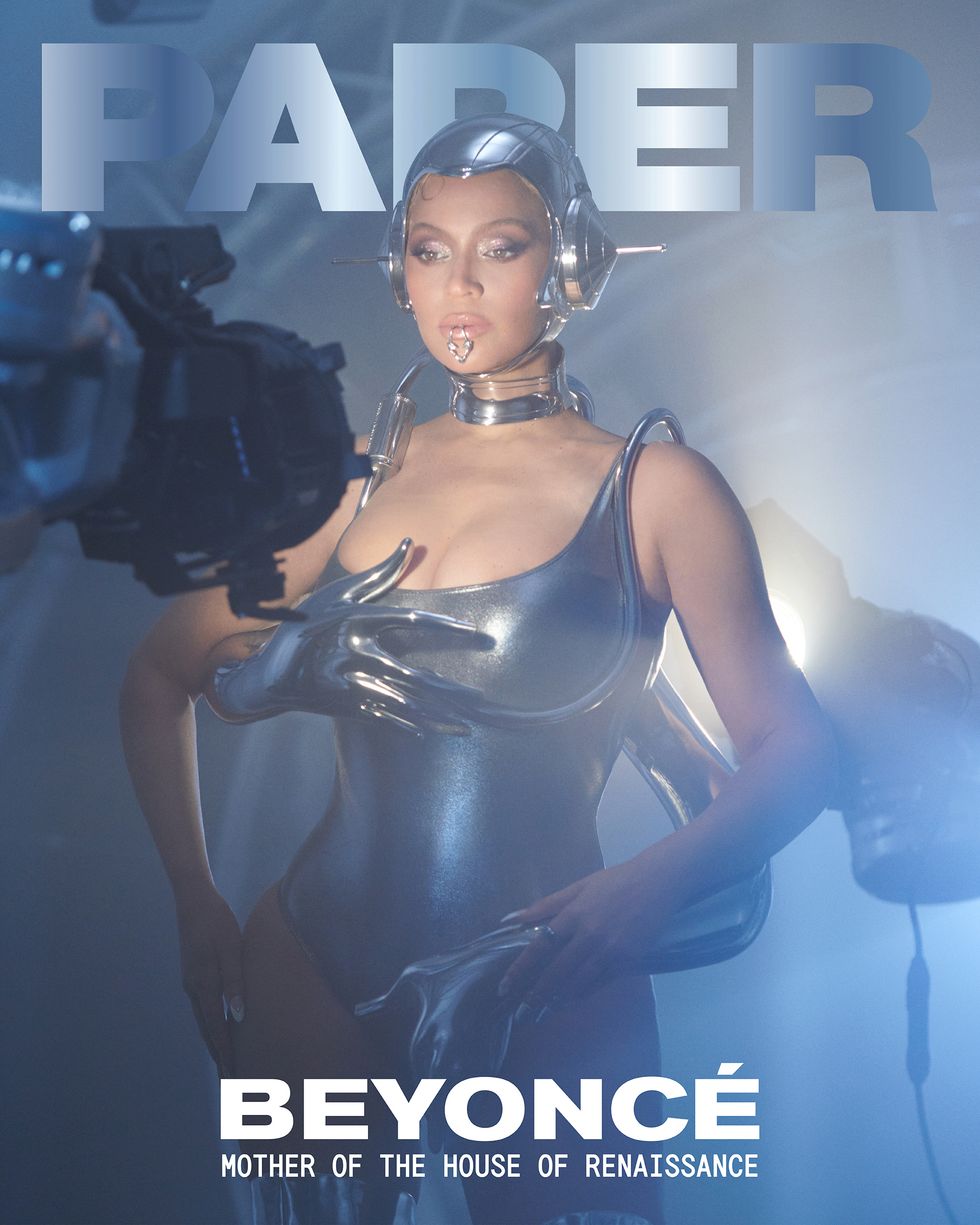
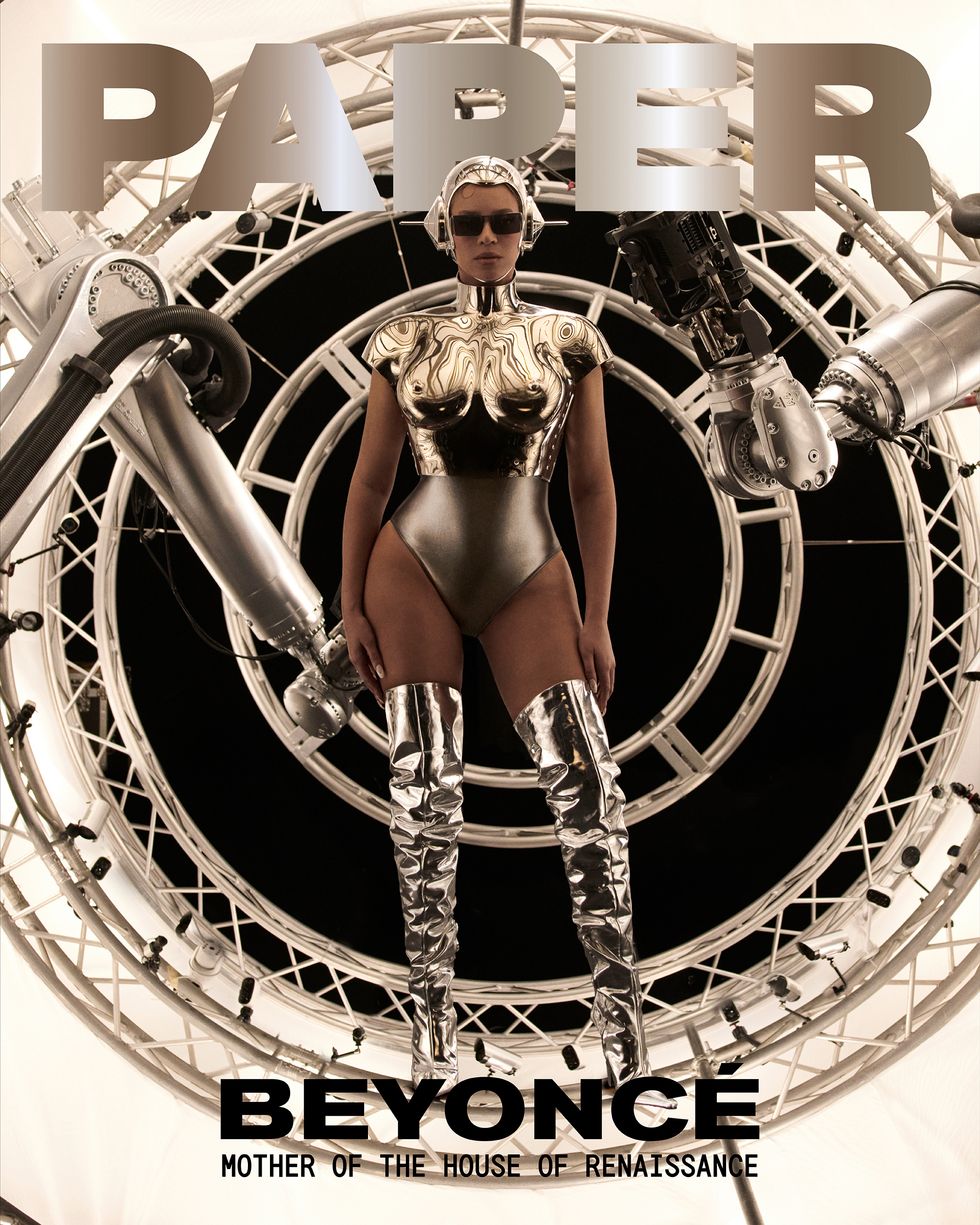
As a 17-year-old in 2003, I once sat in my Blue Ford Probe, secretly listening to the Dangerously in Love album as a closeted Black queer teen. Beyoncé’s music became my solace. Her femininity made me feel safe tapping into mine, even if only in secret. With each release, I watched Beyoncé grow into her own and I grew into myself alongside her. You could see she was more determined, more creative with each project and not afraid to take risks. And in many ways, I was doing the same.
I quit my job in finance and moved to NYC to chase my dreams of being a writer. As Beyoncé’s work became more bold and experimental, I was able to look at her and find the power within myself to find my own reflection. I became more confident in how I wanted to dress. Accepted my nonbinary identity. Watching her become more free allowed me space to do the same.
Now, 20 years later, unapologetically Black and openly queer, Beyoncé’s RENAISSANCE was my signal that it was time for yet another rebirth of my own.
Beyoncé kicked off Black History Month this year by announcing the long-awaited RENAISSANCE WORLD TOUR. There were whisperings about how this was going to be the intersection of everything you heard and felt in the album. I remember that first night we all listened to RENAISSANCE as a friend group. Hearing the voice of Ts Madison, a trans icon in her own right, made us all feel like this album was created for us. Naming the colors of the pride flag in “COZY.” “BREAK MY SOUL” bringing back that ‘90s House music sound. “CHURCH GIRL,” an ode to the Saturday Night Revival that House pioneers like Larry Levan introduced to us, mixing gospel and religion into House beats. Beyoncé got Grace Jones on her album: iconic. The chanting on “HEATED,” an homage to the great history of ballroom commentators whose chants during the competition play an integral role at every ball. It was all there. We felt seen and heard.
The opportunity of a lifetime was being afforded to a community that is rarely given the chance to shine outside balls taking place in the dead of night in warehouses across the country.
Several members from the ballroom community — namely Honey Balenciaga, Carlos Basquiat and Darius Hickman — publicly announced they would be part of the dance crew for the Renaissance tour, and public excitement began to grow. Along with dancer, model and artist Jonte’ Moaning, they became known altogether as “The Dolls.” The opportunity of a lifetime was being afforded to a community that is rarely given the chance to shine outside balls taking place in the dead of night in warehouses across the country.
We know visibility and representation are just a starting point. But for a community that has been castigated many times by society, RENAISSANCE means much more. It’s an opportunity to share our culture with the masses without co-opting, as people from the actual community get to take center stage. This becomes a path towards education, showcasing the many facets of Blackness and queerness, and how we play a major role in influencing Black culture. Moments like this have the chance to elevate many others who’re far too often overlooked, and deserve the chance to perform and thrive in media.
Other dancers from varying backgrounds started announcing their involvement, like new dance captains Hannah Douglass and Amari Marshall, ushering in their big breaks. But there were also familiar faces in Les Twins, the French duo who have been touring with Beyoncé for the last decade or so. Suffice to say, this lineup would be a huge change from what we had been experiencing from Beyoncé’s world tours. When she introduced us to the “Mamas,” her background singers from years ago, they became our mamas. Other dancers became staples, too.
On opening night in May 2023, we all jumped online to find livestreams, clips and anything else we could attach ourselves to. What will Beyoncé wear? What song will she open with? What will the dancers be dressed in? What the hell are we supposed to wear when our date arrives? People were breaking out grandma’s sewing machine, searching for the last bits of metallic material left in the fabric store, piecing together over-the-top looks in hopes of the queen catching only a glimpse of what she’d inspired.
When fans begged for Beyoncé to release visual components to the album, her response was perfect: “You are the visual, baby.” This was our chance to be part of the experience. She allowed us the space to interpret the songs from RENAISSANCE into fashion for the concerts. Everyone got extremely creative posting their looks from the show, creating an immersive experience for fans online.
When my time came in Houston on September 23, I went all pink, paying homage to Beyoncé’s look in the 2001 “Bootylicious” music video. I practiced my lines, trying to get my breath control in check when it came time to rap “HEATED.”
Everyone buzzed as we filed into the stadium, strangers who all for one night would become family. As we took our seats, the anticipation continued to grow. When the lights went down, there she was, standing in a beautiful black-and-white polka dot gown with long gloves. Then, the first note left her mouth: the opening of “Dangerously in Love.” Standing next to one of my best friends, Twiggy Pucci Garcon, I could tell we both wanted to cry. Not just because of the song; it was a moment of peace in a life that can be very hard for Black queers.
This was nostalgic for those who remember Beyoncé’s 2004 Grammy performance of the same song. Her voice — so mature now — but let’s be clear, she still hits all the notes. We had all grown up with her. She was singing to each one of us. Beyoncé has said that if she couldn’t have the dancing and the theatrics, all she needed was a mic and light — and the mic was on. Her voice filled the entire stadium. Raw and powerful. By opening with songs from the past, she set the tone to welcome us into the future, her Renaissance, the biggest party on Earth.
The infusion of ballroom elements throughout the show set this tour apart from any live show Beyoncé’s produced before. Dancers showcased hand performance and duck walks. Several hit spins into dips (not death drops), as Beyoncé sang note after note for nearly three hours. Her runway walk, damn near the length of a football field, let everyone know who was in control with her dancers at each side. They were Beyoncé’s protectors.
A space once hidden from the masses out of protection now had 60,000 fans a night cheering it on.
Ballroom culture dates back more than a century, with its origins tied to Black and Latinx queer communities. Houses were formed with a parental structure of mothers and fathers, taking in kids from the queer community that society had deemed disposable. These houses became shelter and protection, but also bolstered the freedom of expression.
When hours got late and society shut down, ballroom opened its doors. Houses would compete in various categories, winning bragging rights, trophies and cash prizes. The ball was a safe space. Shared identities supporting, loving and caring for one another. This space would now be displayed on the biggest stages on Earth from its biggest star. A space once hidden from the masses out of protection now had 60,000 fans a night cheering it on.
Beyoncé’s new stock of dancers painted a beautiful portrait of ballroom’s expansiveness of style, technique and emotion. Throughout the summer, clips from the show went viral: when Darius got a solo performance during the mini ball segment, showcasing the soft and cunt elements of vogue. Honey Balenciaga’s dramatic style, and one moment when she pranced like a panther. They even allowed another ballroom member who wasn’t a dancer in the show, ChaCha Balenciaga, to have a solo spotlight in DC. Dance captain Amari paid tribute to her brother who passed away during the tour in another touching tableau.
Every show allowed the dancers to put on a mini ball. I myself am a member of the International House of Comme Des Garçons, which recently celebrated its 15-year anniversary. I was introduced to ballroom back in 2007, before becoming a member of a house, because the organization I worked for helped fund balls. While living in DC, I ran an office that provided practice space for the House of Balenciaga. It’s part of who I am.
While watching Beyoncé’s dancers, there was another dancer on my mind: O’Shae Sibley, a young 28-year-old Black queer man who lived in NYC. On the night of July 29, 2023, he was stabbed to death in front of his friends at a gas station, while voguing to RENAISSANCE. He was also part of the ballroom community.
It's such a juxtaposition: to have the biggest artist in the world, night after night, have dancers from ballroom voguing to her music on stage, creating this beautiful safe space for us, while still being seen as a threat in our daily lives with the exact same intersections. Beyoncé acknowledged Sibley on her website. We danced to honor Sibley across the country. We refused to let this album, this tour, this beautiful honor created for us and our community be taken from us. Just like Beyoncé’s Renaissance, we refused to be silent.
Beyoncé has always paid tribute to people who inspire her. Whether it was Etta James and Josephine Baker at Fashion Rocks or Tina Turner and Barbara Streisand at the Kennedy Center, she doesn’t miss a moment to honor those who came before.
This time around, it was Uncle Johnny. Uncle Johnny was her mother, Tina Knowles’, nephew, who was two years older than Tina. But if you know anything about Black families, your older cousins often get titled as “Aunt” or “Uncle” if there is a large age gap. All of my mother’s first cousins have that title. He was Beyoncé’s late gay uncle. He helped make many of her outfits early on in her career and even made her prom dress. Uncle Johnny was her connection to Black queer culture.
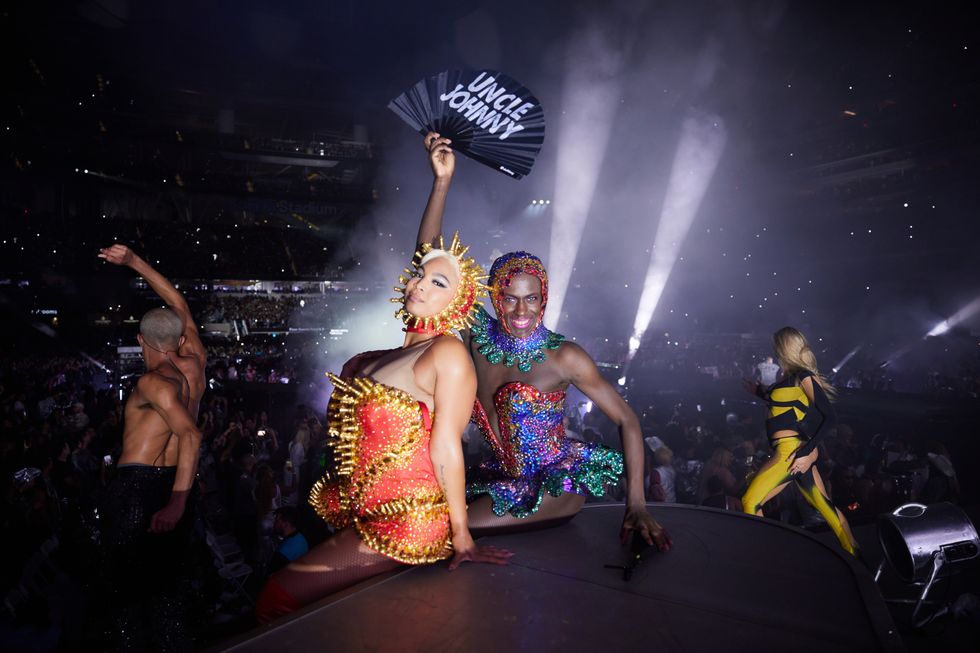
Los Angeles, California
Photo courtesy of Parkwood Entertainment
This jubilant moment, night after night recognizing a person who lived with the virus, and inspired, loved and supported our icon Beyoncé.
“HEATED,” which showcases the chanting and importance of commentators of ballroom culture, also sends a much larger message that many may have forgotten. I recently acknowledged publicly that I have now been living with HIV for 13 years. In my memoir All Boys Aren’t Blue, I also talk about the plight of growing up Black and queer. As I told the story of my life, I realized that I was telling the story of so many who never got to be heard.
Living with HIV: there was a time in the world where that was a dream for many. Just to survive the epidemic. People living with HIV were quarantined off, many dying alone because of fear and stigma. Many of them disposed of by community, family and society. During the ’80s and ’90s, the LGBTQ community was decimated by the virus, especially the Black queer community.
Uncle Johnny represents so many names who have been forgotten. As 60,000 fans in unison chanted at the top of their lungs, “Uncle Johnny made my dress/ that cheap spandex, she looks a mess,” I could only think of the times where so many like Uncle Johnny were never spoken about. The thousands of Black gay and queer men lost to the HIV epidemic, many of whom are buried in potter’s fields in unmarked graves. The names of so many who have been forgotten and never celebrated. Even those like Marlon Riggs and Joseph Beam, who wrote about and documented the Black gay struggle, remain so unknown to so many.
For the current generation of Black queer people who live with the virus both openly and in silence, this moment was for all of us. The originators of House music. The leaders of ballroom whose lives were lost to this, too. This jubilant moment, night after night recognizing a person who lived with the virus, and inspired, loved and supported our icon Beyoncé. And now we all get to share him with her.
Towards the end of the show, “PURE/HONEY” brought us back to Ballroom heaven. “The Rena-Rena-Rena-Rena-ssance” blared. Commentators control the flow of the ball. They know every house, the house members. They create chants, use call-and-response and other rap techniques to keep everyone hyped. At one point I thought to myself, “How hype can we stay?”
And then it was time for the album’s farewell moment, “SUMMER RENAISSANCE.” As Beyoncé flew over the stadium, I waved goodbye to a night I would never forget, thanking her for allowing me to enter her home once again.
I left reflecting on my own life. Leaving the stadium, I knew I had to go back to the fight and struggle that has become the Black queer existence. As the most banned Black author in the U.S., I’m constantly under attack. But in this space I felt loved. I felt appreciated. I felt restored to go back and battle.
That’s why this was much more than a concert. This was a place where I could leave the troubles of the world at home, even if only for three hours. It was a safe space for Black queer folks and all queer folks alike. A music genre created by us, for all of us to celebrate and embrace, now being showcased on the biggest stages. The 17-year-old boy I once was, afraid to be myself and live in my truth, now in my full element.
I’ve been blessed to have been reborn many times in this life. I’ve had at least four career changes. I’ve been gay, then queer, then nonbinary. Changed my pronouns. All of these moments, becoming a newer version of myself. Each Beyoncé project invokes that deep self-reflection. What else is out there in this world for me to conquer?
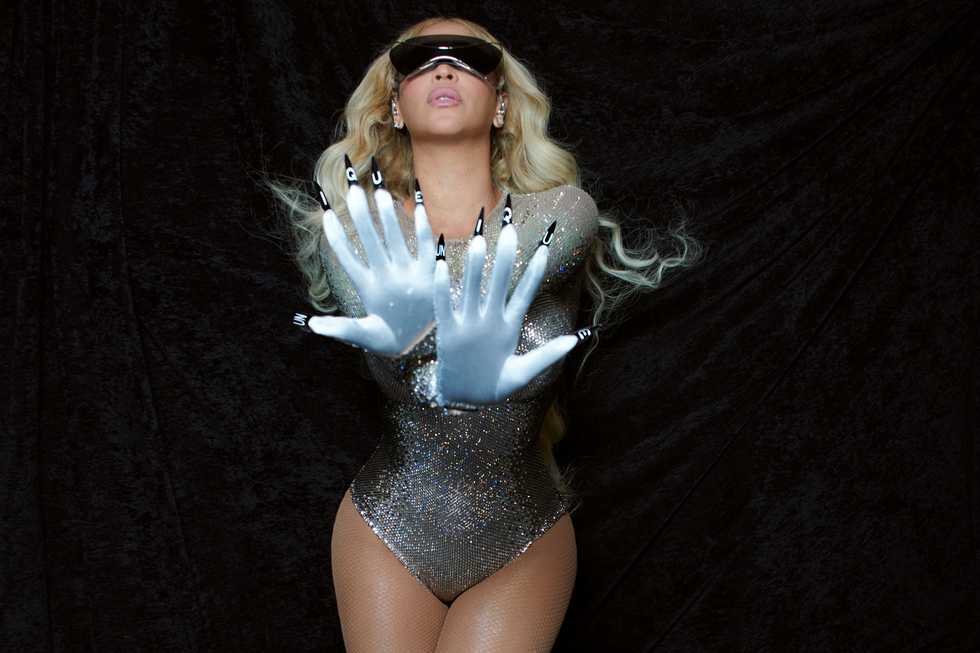
Houston, Texas
Photo courtesy of Parkwood Entertainment
Cover photography: Mason Poole
Styling: Shiona Turini
Hair: Neal Farinah
Make-up: Rokael Lizama
Creative direction: Andrew Makadsi
Art direction: Kelly Shami
Creative production: Hillary Coy
PR: Yvette Noel-Schure
Editor-in-chief: Justin Moran
Managing editor: Matt Wille
Story: George M. Johnson
Cover type: Jewel Baek
Publisher: Brian Calle